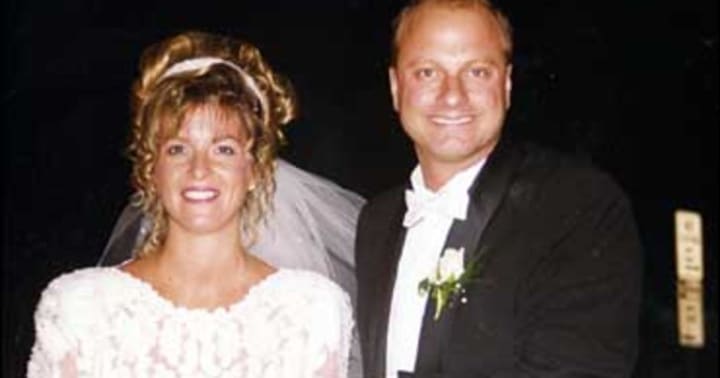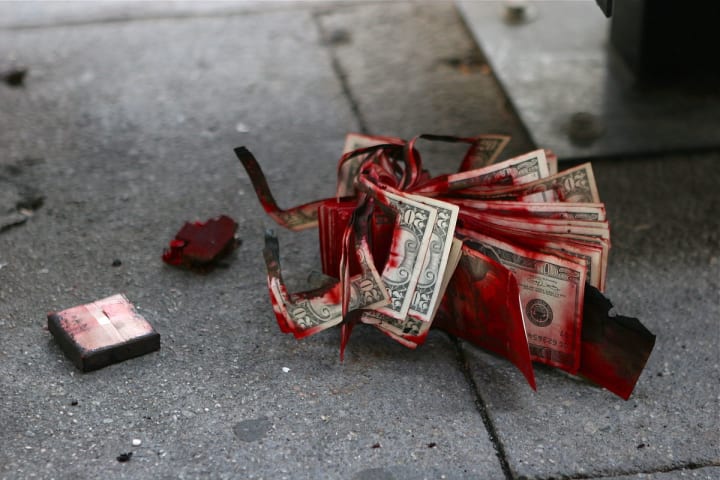
Today's bank robberies aren't exactly Ocean's Eleven. Truth be told, very few are even like The Handsome Guy Bandit, Steven Milam, who donned a mask to rob banks. Fewer still are robberies like the Battle of North Hollywood, when Larry Phillips Jr. and Emil Mătăsăreanu engaged L.A. police in a devasting street battle.These days, they are the despondent down-on-their-luck average Joes or desperate drug addicts looking for a fix. However, the urgent needs of offenders cause serious problems for banks. Take the case of Stephen Trantel. He was a typical suburban husband and dad. During the economic downfall, he lost his place on the trading floor of the NY Stock Exchange. He pretended to go to work every day, and after trying to cope with the huge expenses of living in a New York City suburb, he decided on robbing a bank for financial relief. He robbed 10, with a total take of $60,000. He was smart. Having researched bank jobs, he figured out that 80 percent of bank robbers get caught because of their use of cars. Many are stolen, witnesses give license plate numbers and descriptions of the car; these were drawbacks he considered. Trantel opted for a nonchalant approach. His car was parked blocks away, usually in an out-of-the-way corner of a parking lot, near a dumpster. Using a cup of coffee as a prop, he'd walk around a bit, then enter the bank leaving the cup on a ledge outside the bank chosen. When he left the bank, Trantel would pick up the cup and saunter away, back to his car where he would change clothes behind the dumpster. Stephen was caught because they found a fingerprint on one of the notes he would hand to a teller. He was arrested in 2004, and released from prison in 2012.
Stephen Trantel

What attracts a criminal to a specific bank? There are very specific requirements and the banks themselves are to blame. Extended hours let criminals have their choice of times to attack. Although traditionally robbed in the morning hours when there are fewer customers, today's perpetrators have a programming smorgasbord of times to chose. The winter offers the cover of darkness early, and banks are open later than ever. Mini-branches have sprung up like daffodils in the spring, and most have only one teller. They are located in busy malls and box stores where a crook can blend into the crowd. Banks balk at expensive deterrents like bullet resistant glass walls around their tellers. They cost about $1000 per foot to install and banks think they put customers off. Today's bank jobs don't require blueprints. Branches of banks have standardized construction unless they are in an older building. Perps know exactly where to go because they are all the same. Our financial institutions often can't be bothered to utilize high tech cameras, depending on out-of-date cheapies. Generally speaking, once a bank has been robbed, it will suffer other episodes, mainly because that branch has an attractive look for the bad guys. Most bank robbers do not even bother to "case the joint" because branches are so universal in their setups.
Mini-branch

Dye packs and GPS devices only aide banks in the capture of criminals after the fact. Banks need to implement better technology that is preemptive in nature for the protection of employees and customers alike.
DYE PACK

Almost nothing banks can do will dissuade someone from their mission to rob. However, limiting access to the bank is an idea starting to take hold. Personally encoded access cards must be used to get inside the bank. There are revolving doors that restrict the number of people granted access, and they are also time rigged. A device known as a man-catcher or an access control vestibule scans walk-in customers for weapons. They have bullet resistant walls and cost about $20,000. New branches are being built with a maximum distance between tellers and exits, in the hope that lack of a quick exit will deter hold-ups. The use of decorative columns is put aside because they can block the view of personnel. Higher teller stations and single door exits and entrances are all seen as deterrents to crime. Citibank is piloting the use of Bluetooth technology beacons to open bank doors in New York City. None of these improvements will guarantee that a robbery won't take place, but they will certainly help. The biggest deterrent should be the facts of bank robbing. Most perpetrators are caught within 24 hours. Bank robberies have the highest solve rate of any crime—60 percent. It is a federal offense, which means outsmarting the FBI. The total take averages a mere $4,000. Penalties are hefty, up to 20 years unarmed, over 25 armed. So are 4G's worth it? BTW California is the state with the most bank robberies, right above Texas. L.A. is the bank-robbing capital of the US. Friday is the #1 day of the week, and Saturday is the last choice.
About the Creator
Monica Bennett
I am a retired high school and college teacher. I have taught forensics, biology, chemistry, ecology, and Earth science.. Long Island has been my home for 60 years.






Comments
There are no comments for this story
Be the first to respond and start the conversation.